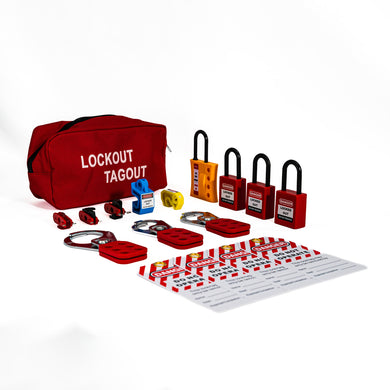In industrial settings, safety is paramount. One crucial safety procedure that often gets overlooked is lockout tagout. This article aims to provide a comprehensive overview of lockout tagout procedures, covering its importance, implementation, and FAQs to ensure a safer work environment for everyone involved.
Understanding Lockout Tagout
Lockout tagout (LOTO) is a safety procedure used in industries to ensure that dangerous machines are properly shut off and not restarted before maintenance or servicing is completed. It involves isolating energy sources and using locks or tags to prevent equipment activation. LOTO is vital for protecting workers from unexpected energization or startup of machinery, which can lead to severe injuries or fatalities.
Importance of Lockout Tagout
Proper lockout tagout procedures are critical for safeguarding employees from hazardous energy sources. By effectively implementing LOTO measures, companies can prevent accidents, injuries, and even fatalities in the workplace. Moreover, adhering to LOTO regulations ensures compliance with safety standards and regulations set forth by governing bodies.
Key Components of Lockout Tagout
- Energy Identification: Identify all energy sources that need to be controlled during maintenance or servicing.
- Lockout Devices: Use lockout devices such as padlocks or lockout hasps to securely lock energy isolation points.
- Tagout Devices: Attach tagout devices to provide additional warning and information about the locked-out equipment.
- Written Procedures: Develop and implement detailed lockout tagout procedures tailored to specific equipment and work processes.
- Employee Training: Provide comprehensive training to employees on lockout tagout procedures, including when and how to use lockout devices correctly.
Implementing Lockout Tagout Procedures
Proper implementation of lockout tagout procedures requires meticulous planning and execution. Follow these steps to ensure effective LOTO:
- Assessment: Identify all energy sources and potential hazards associated with the equipment.
- Notification: Notify all affected employees about the upcoming lockout tagout procedure.
- Isolation: Shut down the equipment and isolate energy sources using appropriate lockout devices.
- Verification: Verify that all energy sources are effectively isolated before starting maintenance or servicing.
- Testing: Test the equipment to ensure it cannot be restarted accidentally.
- Documentation: Keep detailed records of lockout tagout procedures, including who performed the lockout and when.
Common Mistakes to Avoid
- Incomplete Procedures: Failure to identify and address all energy sources can lead to serious accidents.
- Inadequate Training: Improper training on LOTO procedures increases the risk of human error.
- Failure to Verify: Neglecting to verify energy isolation can result in unexpected startup incidents.
- Ignoring Maintenance: Regular maintenance of lockout tagout devices is crucial for their effectiveness.

FAQs (Frequently Asked Questions)
- What is the purpose of lockout tagout? Lockout tagout is designed to prevent the unexpected startup of machinery during maintenance or servicing, protecting workers from injury.
- How often should lockout tagout procedures be reviewed? lockout tagout procedures should be reviewed annually or whenever there are changes in equipment or processes.
- Can lockout tagout devices be reused? Lockout tagout devices can be reused if they are in good condition and have not been compromised.
- Who is responsible for implementing lockout tagout procedures? Employers are responsible for implementing and enforcing lockout tagout procedures, while employees are responsible for following them.
- What are the consequences of non-compliance with lockout tagout regulations? Non-compliance with lockout tagout regulations can result in fines, legal penalties, and, most importantly, workplace accidents.
- How can I ensure the effectiveness of lockout tagout procedures? Regular training, equipment inspections, and procedural reviews are essential for maintaining the effectiveness of lockout tagout procedures.
Conclusion
In conclusion, lockout tagout procedures are indispensable for ensuring workplace safety in industrial environments. By following proper LOTO protocols, companies can mitigate risks, prevent accidents, and protect their most valuable asset—their employees.





